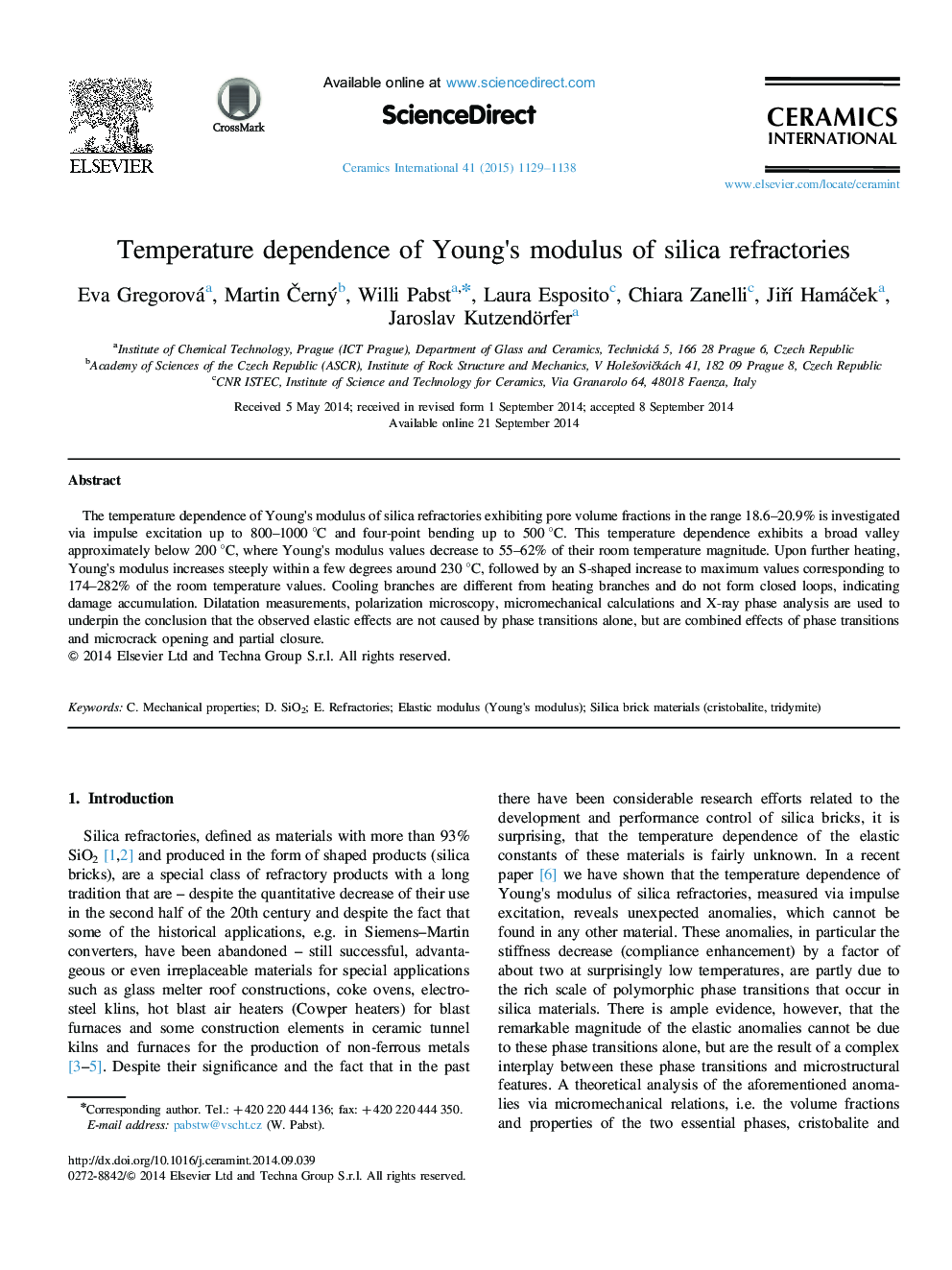| Article ID | Journal | Published Year | Pages | File Type |
|---|---|---|---|---|
| 1460809 | Ceramics International | 2015 | 10 Pages |
The temperature dependence of Young׳s modulus of silica refractories exhibiting pore volume fractions in the range 18.6–20.9% is investigated via impulse excitation up to 800–1000 °C and four-point bending up to 500 °C. This temperature dependence exhibits a broad valley approximately below 200 °C, where Young׳s modulus values decrease to 55–62% of their room temperature magnitude. Upon further heating, Young׳s modulus increases steeply within a few degrees around 230 °C, followed by an S-shaped increase to maximum values corresponding to 174–282% of the room temperature values. Cooling branches are different from heating branches and do not form closed loops, indicating damage accumulation. Dilatation measurements, polarization microscopy, micromechanical calculations and X-ray phase analysis are used to underpin the conclusion that the observed elastic effects are not caused by phase transitions alone, but are combined effects of phase transitions and microcrack opening and partial closure.
